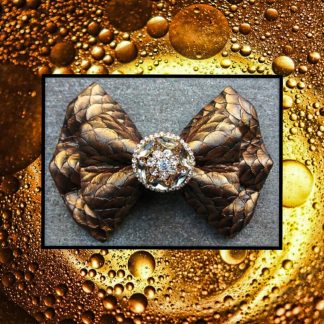A Tourist Perspective | By Porsha Stuckey
Nestled in the heart of Denver’s historic and ethnically vibrant Five Points district, the Blair Caldwell African American Research Library has, for seventeen years, been serving the community as a reserve of Black history archives. The 40,000 square foot library contains three impressive floors, each dedicated to showcasing considerable collections of the achievements of African-Americans in Denver, and their contributions to revolutionizing the American West.

The library was conceived by the honorable Wellington Web, the first Black Mayor of Denver, and First Lady Wilma Web. The couple envisioned erecting a museum that would preserve and showcase Black folks’ underrepresented influences on Denver’s educational, political, and economic advancements. The name, “Blair Caldwell” is a combination of two prominent political figures proposed by the Webs. Omar Blair, a Tuskegee Airman who later became the first Black president of the Denver school board, and Elvin Caldwell, who was the first Black member admitted to Denver’s City Council. I was permitted the honor to meet with Ms. Terry Nelson, the library’s Special Collection and Community Resource Manager, who granted me the privilege of a private tour. Upon entry, I was immediately enveloped by a sense of a sacred welcoming and belonging. Artist Yvonne Muinde’s outstanding mural, which surrounds the front desk, shone down on me like a melanated sun and seemed to beckon me nearer. Entitled, The Spirit of Togetherness, the acrylic wall painting is most befitting the entrance of this unique library. It thoughtfully combines Black personages from the old West, with contemporary images of legendary heroes and heroines. From these depictions, it is inherently understood that if not for our browbeaten brethren, who migrated to the West as early as 1860, settled, and developed the land, further advancements by well-known civil and equal rights leaders could not have been made. This provocative work of art begs us to contemplate the enormity that we abounded after a liberation that was never intended to occur, and have prevailed in a country in which we used to be enslaved. Upon entry, this stunning painting chides that we are stronger together and that our successes are primarily due to the courage and inventiveness of our ancestors, vis-à-vis, we need each other. Moving on, I observed that the first-floor functions as a full-service, conventional, library. However, touring it was the equivalent of shaking a succession of prominent hands at an exclusive meet and greet.

A large portion of the first-floor’s walls is lined with an assemblage of photographs and excerpts detailing the accomplishments of some of Denver’s past and present council members, educators, attorneys, ministers, journalists, ambassadors, firefighters, Tuskegee Airmen, and diplomats. Reading about them from behind their roped enclosure was a wonderful refresher that debunks the myth that we are incompetent to attain such achievements, or are the minority in such statuses. Ascending to Blair Caldwell’s second floor uncovers a long wooden hall of striking glass display cases. They contain relics and collectibles of African Americans, not long freed from slavery, who accomplished extraordinary things amid racially hostile eras. Memorabilia documenting their diplomas, degrees, and prominent affiliations with top-ranking social groups, religious sects, and educational networks, widely believed as exclusive to Whites only members, extend the full length of the second level. Additionally, the second floor houses a quaint study and media room tastefully adorned with a salient mural by local artist, Darrell Anderson. Entitled, The Essence of Huey P. Newton, the canvas pays a whimsical tribute to the late co-founder of the Black Panther Party. Furthermore, visitors may devour a considerable collection of reference books and academic journals on microfilm. These donated collections are dedicated to the furtherance and preservation of Denver’s Black history and beyond. Such titles in each compilation include: “Denver Landmarks & Historic Districts,” “The Mediterranean In History,” “Africa – The Time Has Come,” “Sowing The Mustard Seed,” “Visions of Finland,” “North American Indian Landmarks, Travelers Guide,” and “In Our Own Words.” And yet, the third floor of Blair Caldwell seems to await Black history- seekers as a gracious host, a most welcomed guest. Exiting the elevator to the third level beholds a sprawling galleria of vivid hand-painted portraits of Black pioneers whom you and your children ought to know. The waxed corridor then reveals an unrestricted opening to an alluring exhibition hall, through which visitors may self-guide themselves or schedule a directed tour. The museum is unique for its thoughtful design to provide a palpable and interactive learning experience. I delighted in sitting in the replicated version of the iconic Roxy Theatre (unphotographed at the behest of Mrs. Nelson), which plays an informative and entertaining, 8-minute docufilm about the history of Denver.

Sightseers will be pleased to discover other staged reproductions of Denver’s historical accounts, such as the Mural of Barbershop exhibit, the first Denver Trolley replica, and rare photos of Hendey & Meyer’s: Erecting and Boiler Shop, Excelsior Steam Engine Works, and the Pattern Shop. All were some of the first Black-owned businesses to successfully open and operate with longevity in Denver dating back to the 1900s. I emerged from my four-hour tour with a new layer of education, completely reinvigorated, and grateful. Knowledge of self has always been posited as quintessential for every individual to achieve self-actualization, or to become the most that one can be. The birthplace of self-knowledge initiates from deep inside each person, and the stimulus for this initiation is generated through factual storytelling about one’s parents, extended family, place of origin, and heritage. These tidbits of knowledge are paralleled to droplets of water, which, when coalesced, form a great lake. To be denied such stories will inevitably prove detrimental to an individual’s pursuit to self-actualize. Yet, thankfully, the Blair Caldwell African American Research Library and Museum is likened to a reservoir, standing at the ready to help replenish some of the missing narratives.
-Written By Porsha Stuckey






